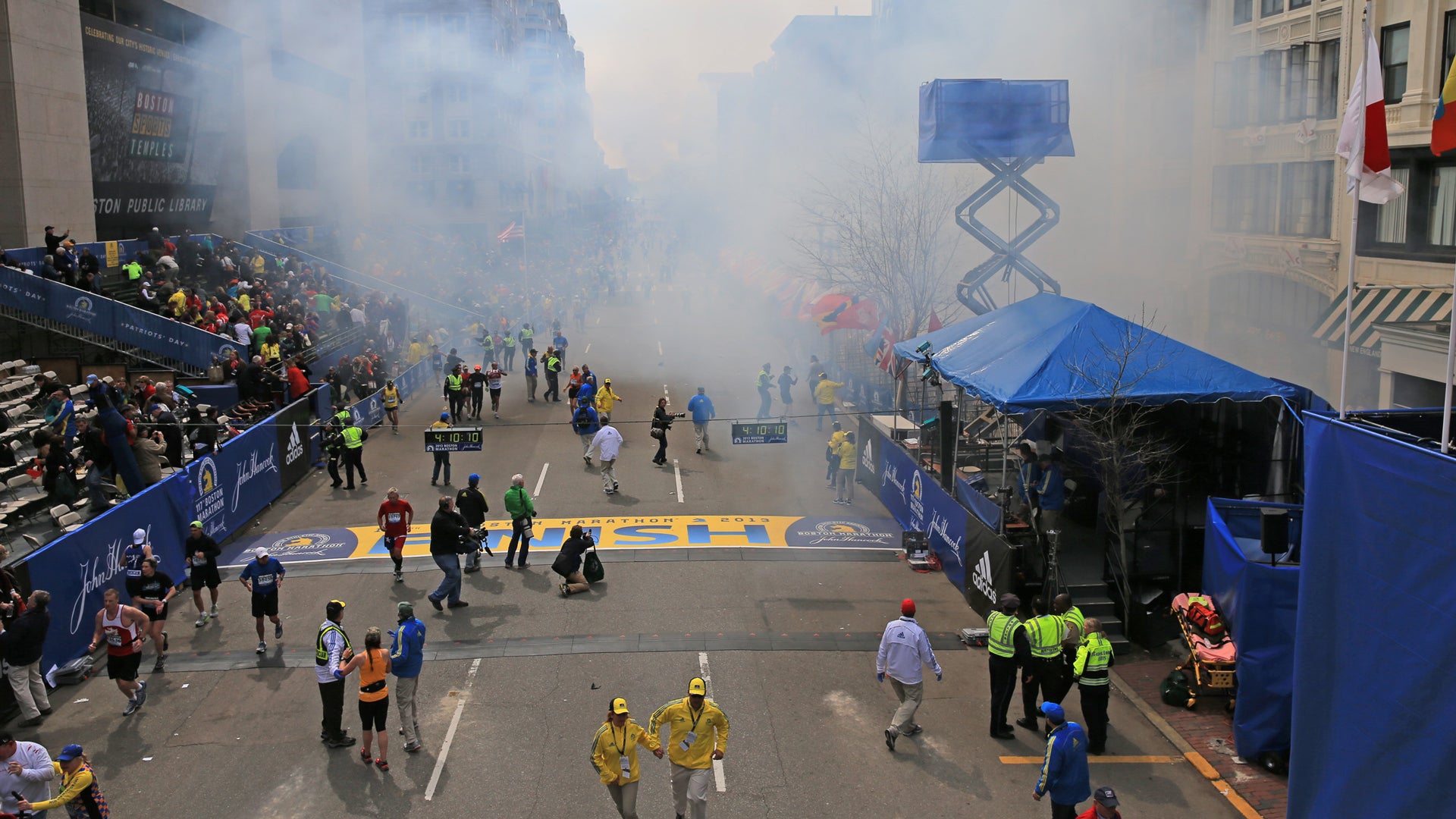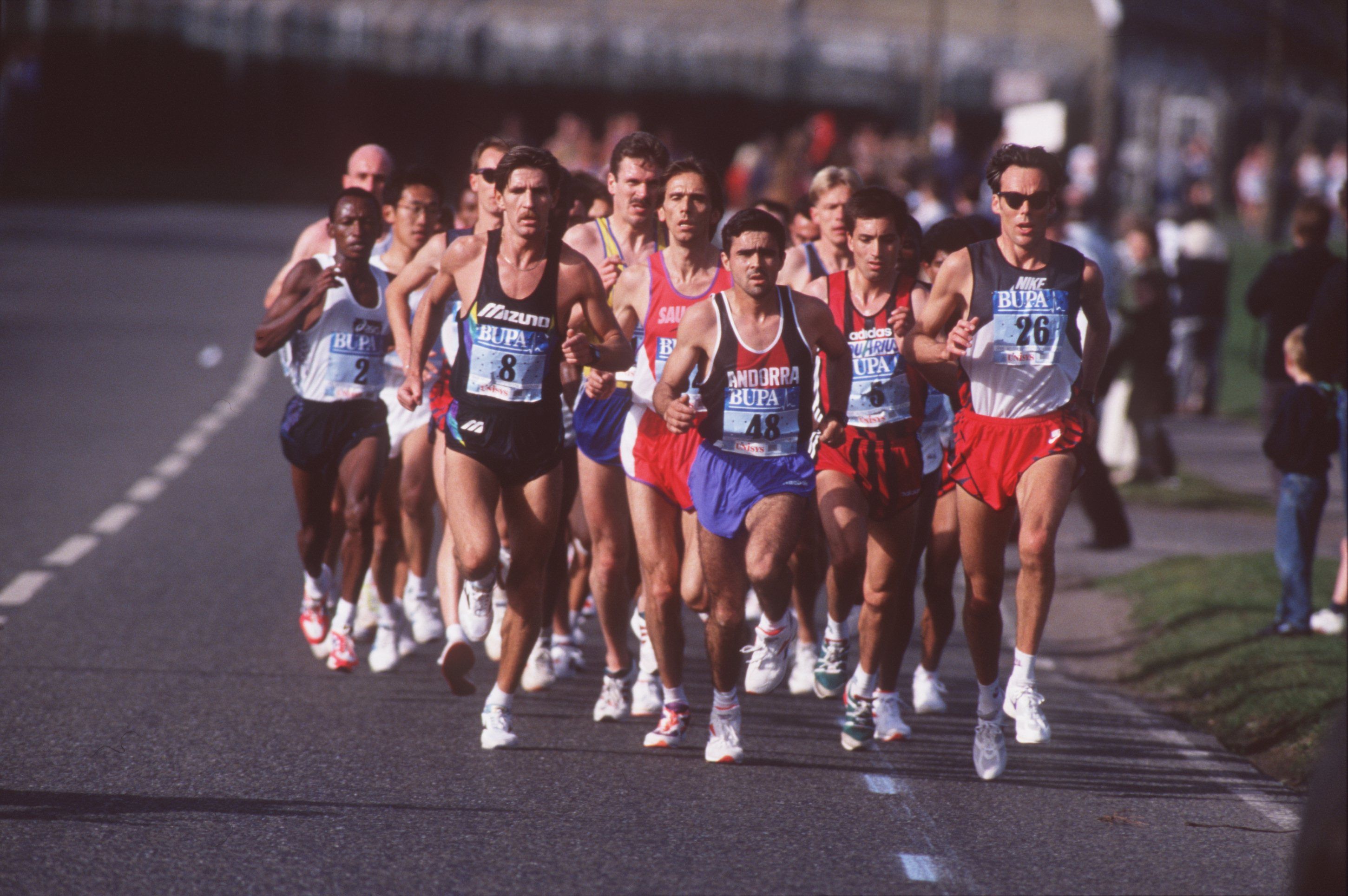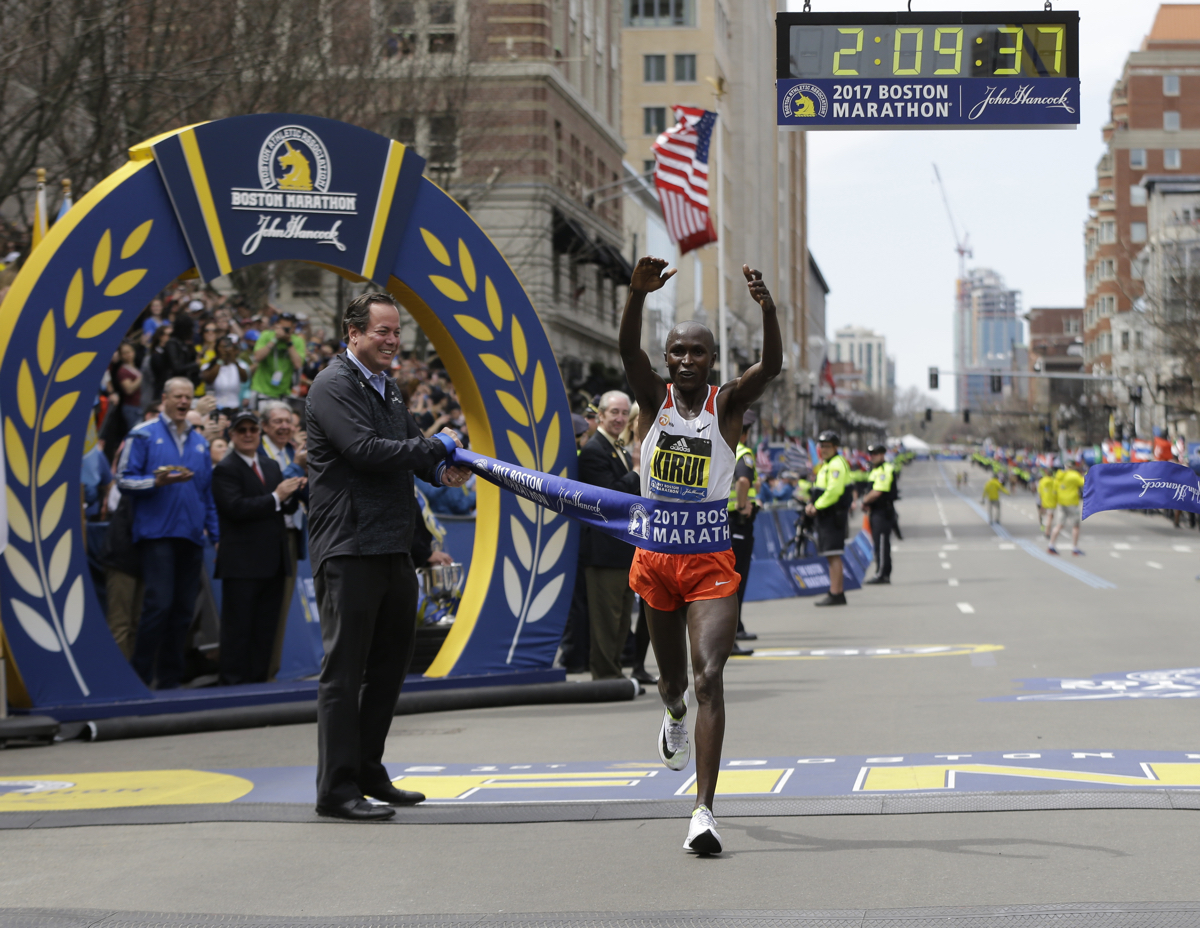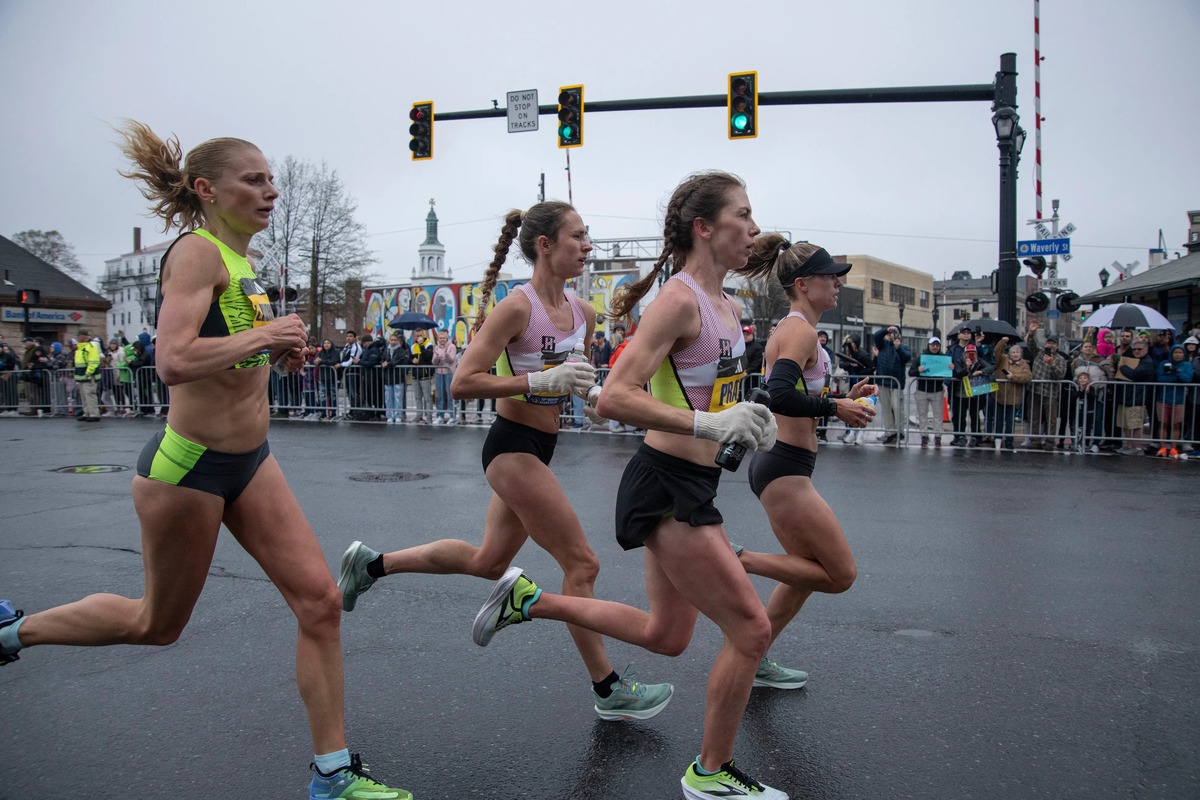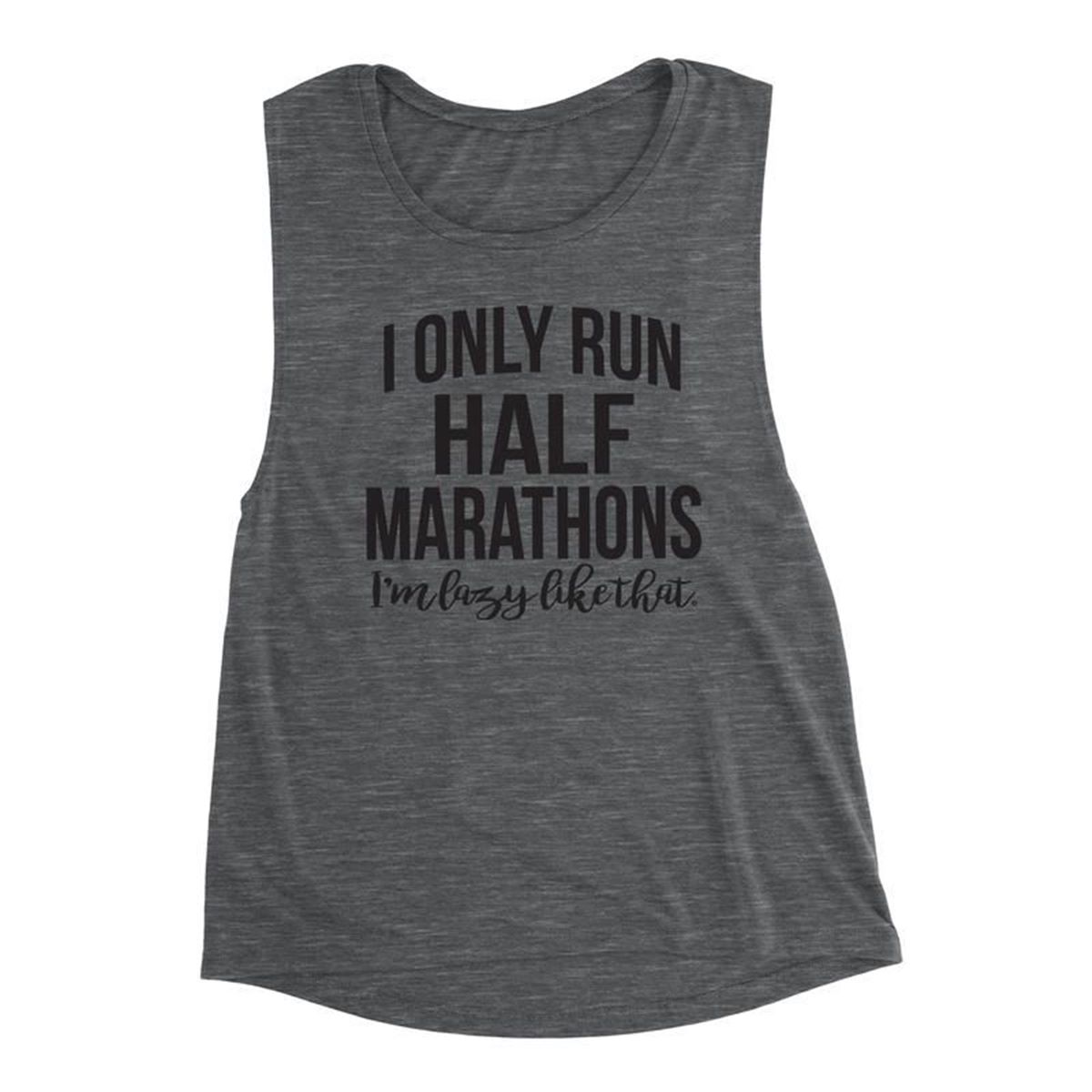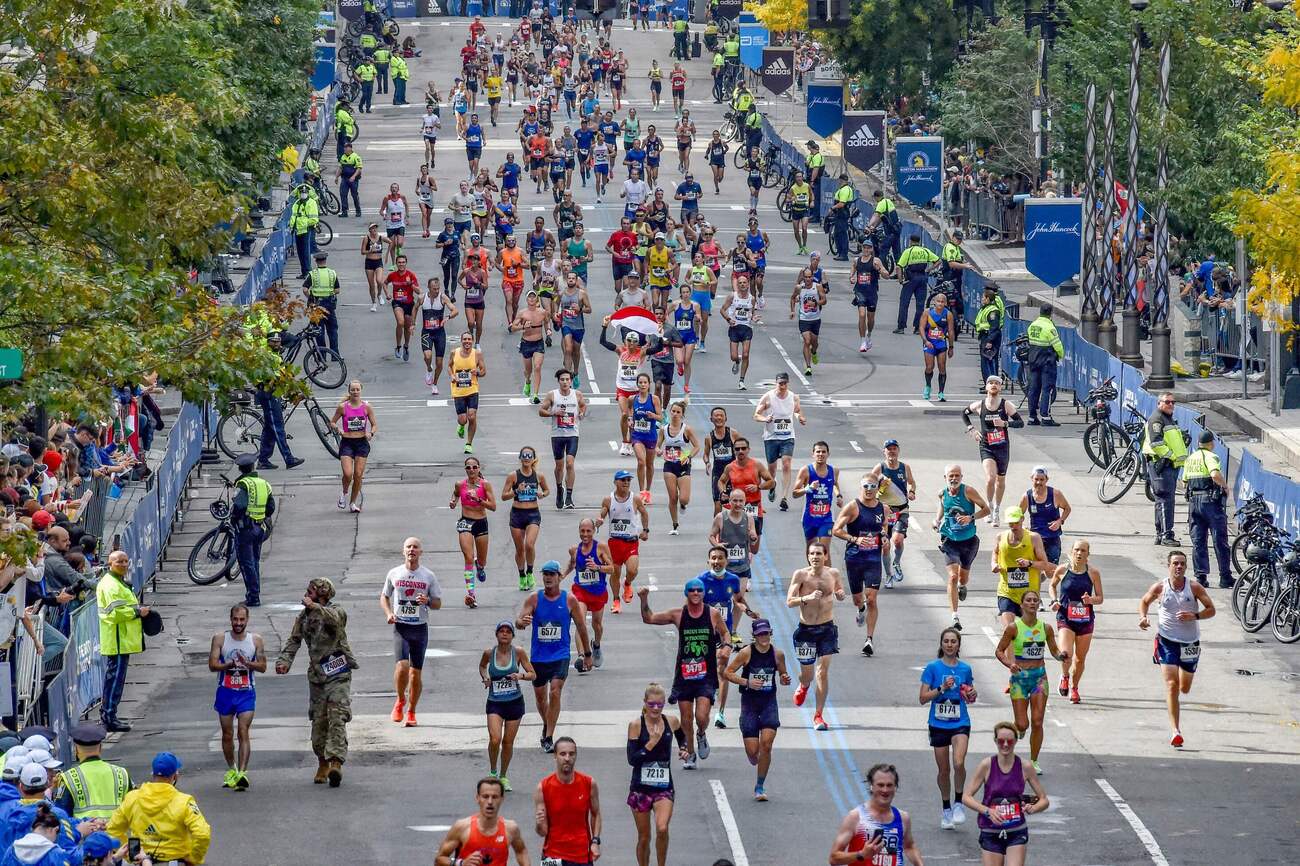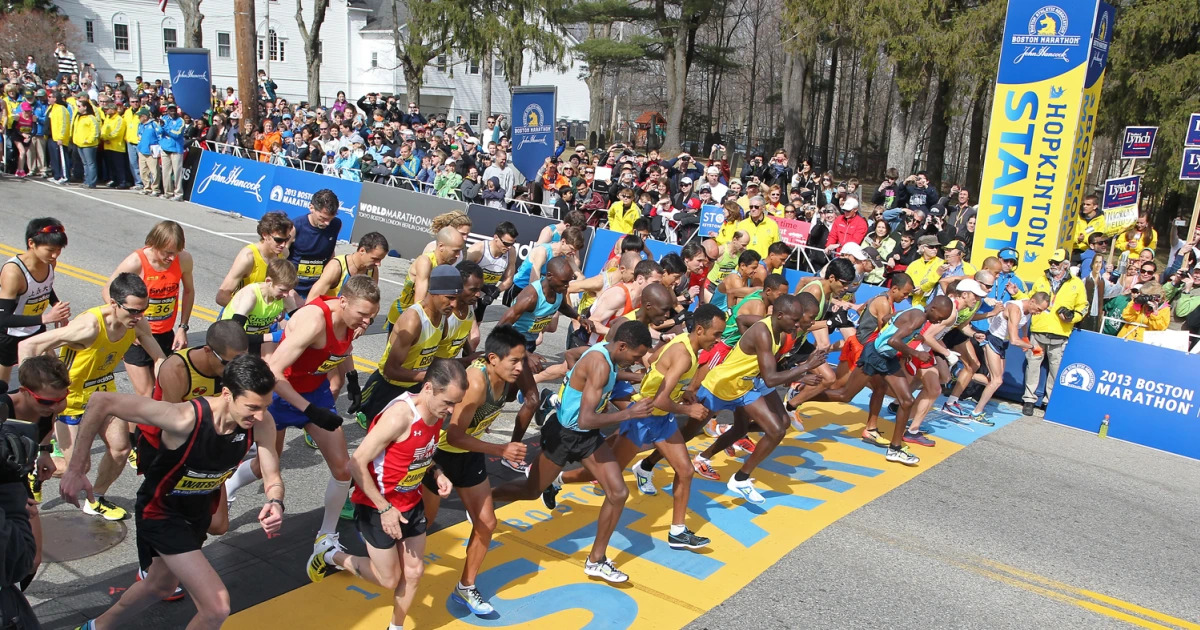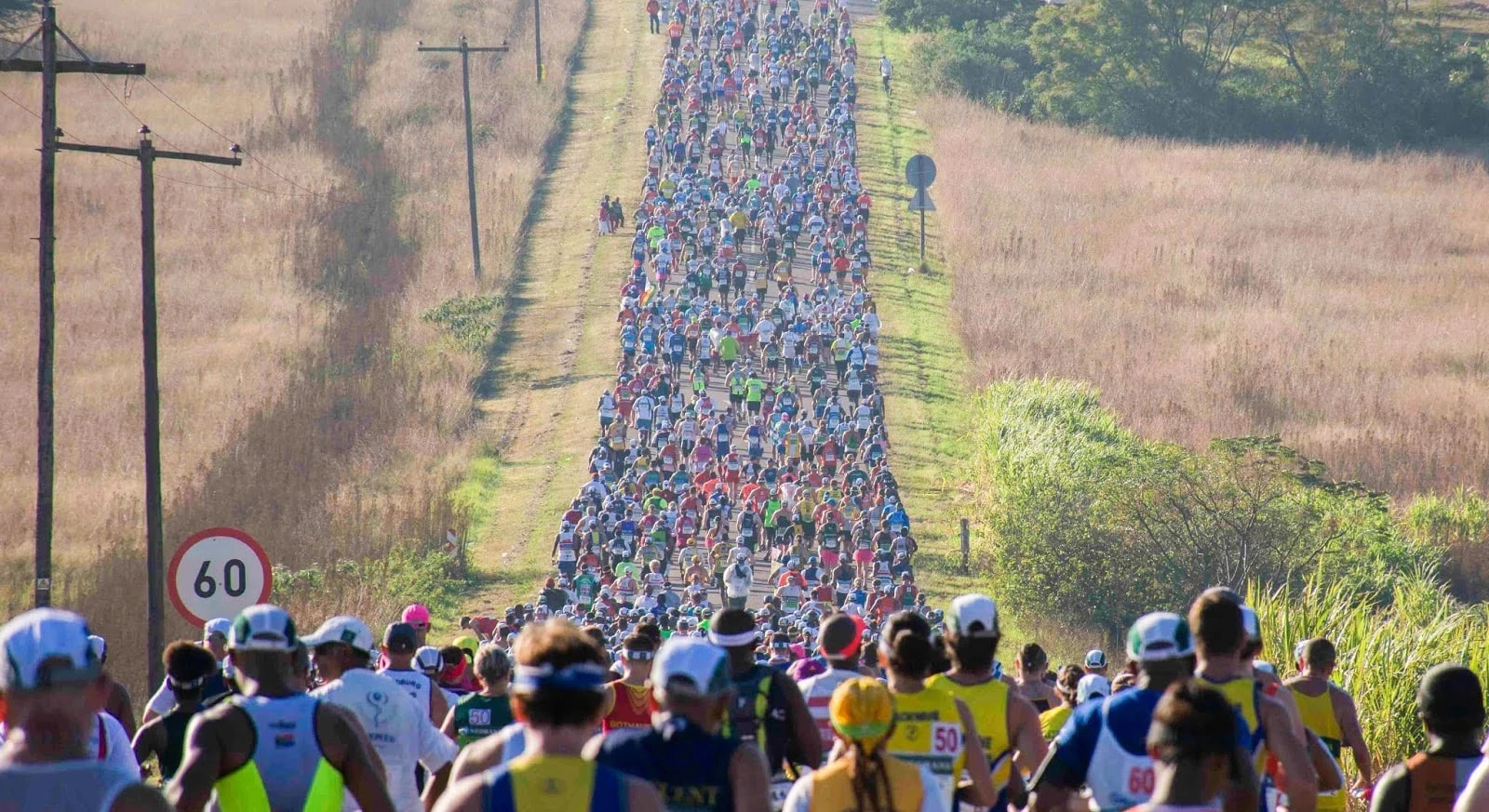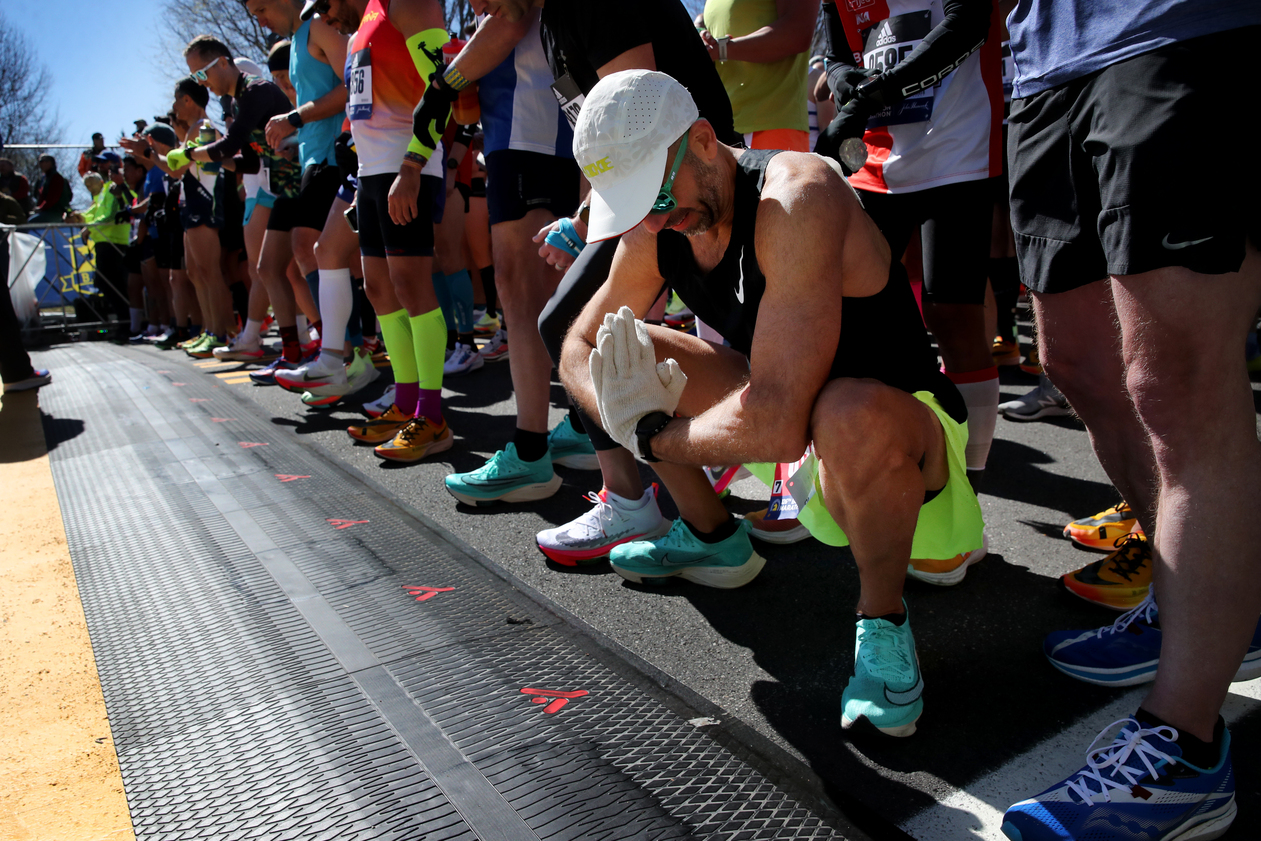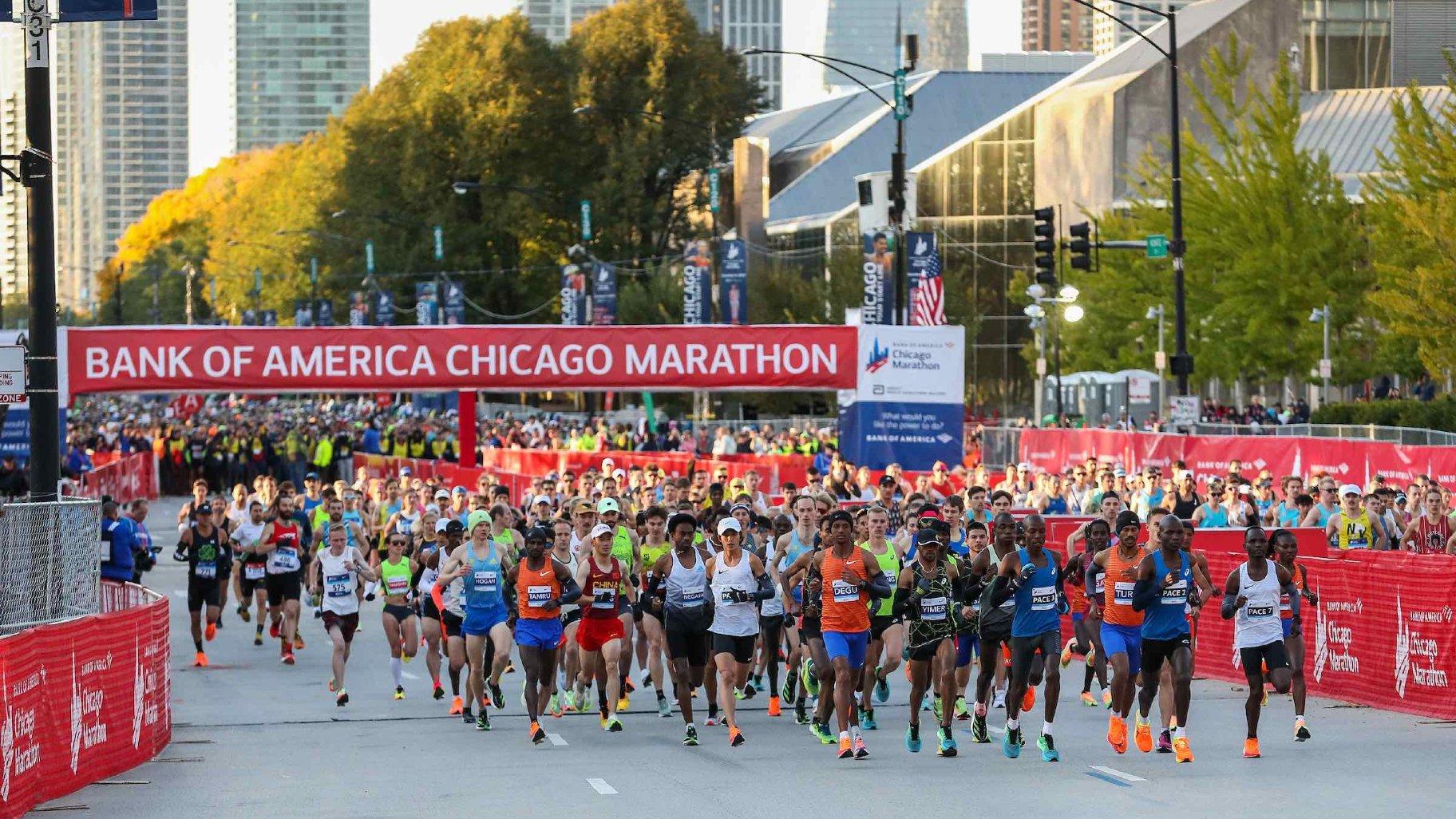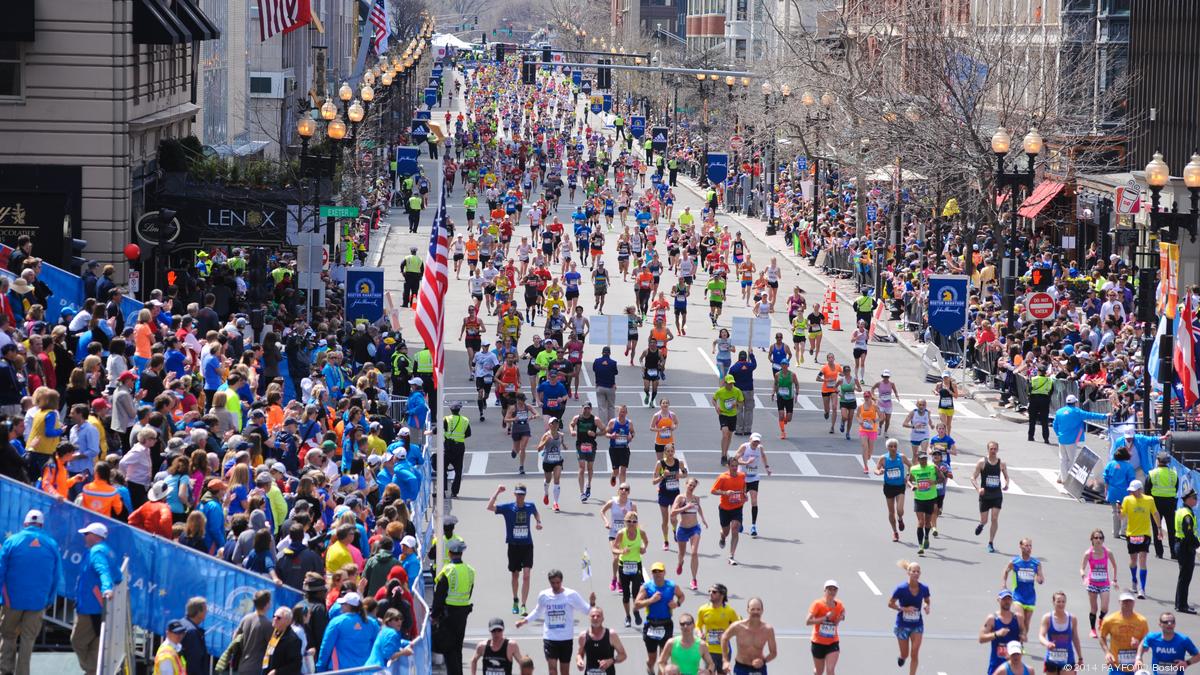

Featured
How Many People Run The Boston Marathon
Modified: January 2, 2024
Discover the number of participants in the iconic Boston Marathon. Read this featured article to learn more about how many people run in this prestigious race.
Introduction
The Boston Marathon is one of the most prestigious and iconic races in the world, attracting runners from all walks of life. This legendary event, held annually in Boston, Massachusetts, has a rich history dating back to 1897 and has become a symbol of endurance, determination, and the triumph of the human spirit.
From humble beginnings with just 18 participants in its inaugural year, the Boston Marathon has grown exponentially in popularity, attracting thousands of runners, both elite athletes and amateur enthusiasts, from around the globe. This marathon holds a special place in the hearts of runners due to its challenging course and the stringent qualifying standards required to participate.
Over the years, the Boston Marathon has become a bucket-list race for many aspiring runners. The allure lies not only in the event’s prestigious status but also in the camaraderie and the electric atmosphere created by enthusiastic spectators lining the course. The cheers from the crowd provide an extra boost of motivation that helps runners push through the grueling 26.2-mile journey.
Running the Boston Marathon is a dream for many, and it takes serious dedication and commitment to qualify for this race. Runners must meet specific age and gender qualifying standards by completing a certified marathon within a specified time frame. These rigorous requirements ensure that participants are well-prepared and capable of tackling the challenging Boston Marathon course.
This article aims to delve into the details of the Boston Marathon, from its rich history and the process of qualifying for the race to the number of participants and their performance. We will explore factors that influence the number of participants, including various demographics such as gender and age, and provide insight into the average finish times of the runners.
So, lace up your running shoes and join us on this virtual journey through the excitement, challenges, and triumphs of the Boston Marathon.
History of the Boston Marathon
The Boston Marathon, held annually on Patriots’ Day, has a storied past that spans over a century. It all began in 1897 when the first race took place with a modest group of 18 participants. Inspired by the revival of the marathon event at the inaugural modern Olympic Games in Athens two years prior, the Boston Athletic Association (BAA) organized the race to commemorate the centennial of the American Revolution.
The early years of the Boston Marathon were marked by limited participation, but as word spread of the challenging course and vibrant atmosphere, more runners flocked to take part. In 1900, the race had grown to 15 times its original size, with 24 participants. Over time, the Boston Marathon gained recognition and prestige, attracting both local and international runners.
One of the significant moments in the Boston Marathon’s history came in 1966 when Roberta “Bobbi” Gibb became the first woman to unofficially complete the race. Despite initial resistance from race officials who believed women were physiologically incapable of running long distances, Gibb defied expectations and paved the way for future female participants.
The inaugural women’s race officially took place in 1972, ensuring that women had the opportunity to compete on an equal footing. Since then, female participation has become an integral part of the Boston Marathon, with women continuing to push boundaries and excel in the sport.
The history of the Boston Marathon is also marked by extraordinary individual performances and memorable moments. In 2013, tragedy struck when two bombs exploded near the finish line, resulting in the deaths of three people and injuring hundreds. This act of terrorism sent shockwaves through the running community and the world. However, the resilience and determination of the Boston Marathon and its runners were evident as the race continued the following year, with a renewed sense of unity and strength.
Throughout the years, the Boston Marathon has continued to evolve, with improvements made to the race course and advancements in technology. From upgrades in timing systems to the incorporation of wave starts, these changes have enhanced the overall experience for participants and spectators alike.
Today, the Boston Marathon stands as one of the most prestigious and well-regarded marathons in the world. It has become an event that showcases the tenacity and spirit of the running community, attracting elite athletes, dedicated amateurs, and enthusiastic supporters from every corner of the globe.
Qualifying for the Boston Marathon
The Boston Marathon is renowned for its strict qualifying standards, which ensure that only the most accomplished runners have the opportunity to compete in this prestigious race. Unlike many other marathons that allow participants to simply sign up, the Boston Marathon requires runners to meet specific time qualifications based on age and gender.
The qualifying standards for the Boston Marathon are determined by the Boston Athletic Association (BAA), the organization that oversees the race. To be eligible to apply, runners must complete a certified marathon within a specified timeframe, which varies depending on age and gender. These qualifying times are designed to reflect the competitive nature of the Boston Marathon and the caliber of runners it attracts.
The qualifying times for the Boston Marathon are challenging but attainable for dedicated and experienced runners. Each age group, starting from 18-34 years and continuing at five-year increments, has a different qualifying time. On the BAA’s official website, runners can find a comprehensive list of the qualifying times for each age group and gender.
For example, as of 2021, the qualifying time for male runners aged 18-34 is 3 hours and 10 minutes, while for female runners in the same age group, it is 3 hours and 40 minutes. As the age groups increase, the qualifying times also become more lenient, accommodative of the natural effects of aging on running performance.
It is important to note that meeting the qualifying time does not guarantee acceptance into the Boston Marathon. Due to the popularity of the event, the number of applicants often exceeds the available slots. In such cases, the BAA implements a system where runners who exceed their respective qualifying standards by a larger margin are given priority acceptance.
For many runners, qualifying for the Boston Marathon is a significant achievement and a testament to their dedication and hard work. It requires months, if not years, of consistent training, discipline, and a deep passion for the sport. It’s not uncommon for runners to make multiple attempts before attaining the coveted qualifying time.
Qualifying for the Boston Marathon is not just about the time on the clock; it represents a personal milestone and the fulfillment of a dream for many runners. The opportunity to toe the line at the historic race brings a sense of accomplishment and pride that extends far beyond the race day itself.
In the next section, let’s explore the number of participants in the Boston Marathon and how it has evolved over the years.
Number of Participants in the Boston Marathon
The Boston Marathon has seen a remarkable increase in the number of participants over the years. What started as a race with a mere 15 participants in 1897 has now evolved into one of the largest and most highly anticipated marathons in the world.
In recent years, the Boston Marathon has consistently attracted an average of over 30,000 registered participants. This includes both elite athletes vying for the top positions and recreational runners who have qualified through the BAA’s rigorous standards. However, it is important to note that not all registered participants ultimately complete the race.
The surge in popularity and demand for entries has led to the implementation of a rolling registration process. This process gives priority to the fastest qualifiers and those who have previously participated in the Boston Marathon. It allows the BAA to manage and accommodate the increasing number of interested runners while ensuring the event remains competitive and prestigious.
Each year, the total number of participants is divided into separate waves or corrals, with different start times to avoid overcrowding on the course. This also helps maintain a smooth flow of runners and ensures a safe and enjoyable racing experience for all.
Aside from the registered participants, the Boston Marathon attracts an incredible number of spectators along the entire course. Thousands of enthusiastic onlookers line the streets, bringing energy and encouragement to the runners. The vibrant and supportive atmosphere adds an extra level of excitement to the event and makes it a truly memorable experience.
It is worth noting that the number of participants in the Boston Marathon has not always been consistent. In recent years, there have been occasional fluctuations due to various factors such as weather conditions, changes in registration processes, or even unforeseen events like the COVID-19 pandemic, which resulted in the postponement and virtual format of the race.
Despite these fluctuations, the enduring popularity of the Boston Marathon speaks to the race’s significance in the running community. It continues to inspire individuals from all walks of life to challenge themselves and strive for excellence in their pursuit of crossing the historic finish line on Boylston Street.
Now, let’s delve into the factors that influence the number of participants in the Boston Marathon and explore the demographics of the runners.
Factors Influencing the Number of Participants
Several factors contribute to the fluctuating number of participants in the Boston Marathon. These factors can range from external influences to changes in race logistics and qualifications. Understanding these factors can provide valuable insights into the dynamics of the event and its evolving popularity.
One of the primary factors influencing the number of participants is the qualifying standards set by the Boston Athletic Association (BAA). The rigorous qualification times create a high bar for entry, ensuring that only serious and dedicated runners make it to the starting line. As the qualifying times become more challenging, it can impact the number of participants who are able to meet the requirements.
Another significant factor is the attractiveness of the Boston Marathon among both seasoned marathon runners and aspiring participants. The race’s rich history, prestigious reputation, and challenging course have made it a bucket-list event for many running enthusiasts. The desire to be a part of this iconic race and to test oneself on the historic course significantly contributes to the high demand for entry.
External events and circumstances can also impact participant numbers. For instance, the aftermath of the 2013 Boston Marathon bombings resulted in an outpouring of support and solidarity from the running community, leading to increased interest in the race. This surge in popularity led to a higher number of registrants in subsequent years as runners rallied behind the event.
Weather conditions can also influence participant numbers. Extreme weather, such as unseasonal heat, cold, or heavy rain, can discourage some individuals from registering or completing the race. Conversely, favorable weather conditions can attract more participants who are eager to maximize their performance and enjoyment.
The availability of resources and support is another factor that affects the number of participants. Adequate infrastructure, medical facilities, volunteers, and accommodations play a crucial role in ensuring a smooth and well-organized race. If any of these essential elements are lacking, it can impact the overall experience and discourage potential participants.
Changes in registration processes and race policies can also have an impact. For example, in recent years, the Boston Marathon introduced a rolling registration system that favors faster qualifiers. This change ensures that those who meet the most challenging standards have a higher chance of securing a spot. Alterations in qualifications, race dates, or entry fees can all influence participant numbers and the overall demographics of the field.
Lastly, global events such as the COVID-19 pandemic have had a significant impact on the number of participants in recent years. The need for social distancing and restrictions on large gatherings have led to modifications in race formats, including virtual races. These alterations may affect the level of interest and participation due to the absence of the traditional in-person event experience.
Understanding these various factors provides valuable insight into the dynamics of the Boston Marathon and its ever-evolving participant numbers. These influences capture the essence of the race, reflecting the dedication and determination of the runners, while also acknowledging the external circumstances that can shape the event’s popularity.
Now, let’s explore the demographics of the participants in the Boston Marathon, starting with the breakdown by gender.
Gender Breakdown of Boston Marathon Runners
The Boston Marathon is a celebration of inclusivity and athleticism, attracting both male and female runners from around the world. Over the years, the participation of women in the race has seen significant growth, reflecting the progress and evolving gender dynamics in the sport of running.
Historically, the Boston Marathon was exclusively a men’s race until 1972 when women were officially allowed to participate. Since then, female participation has steadily increased, making the event more diverse and inclusive. Women have proven themselves as formidable athletes, pushing boundaries and achieving remarkable feats on the Boston Marathon course.
Today, the gender breakdown of Boston Marathon runners reflects a more balanced and equitable field. Female participation continues to increase, narrowing the gender gap and highlighting the achievements of women in distance running. Female runners bring their unique talents, determination, and inspiring stories to the race, further enriching the overall running community.
The growth in female participation can be attributed to various factors, such as increased opportunities and support for women in sports, the rise of women’s running clubs and communities, and greater awareness of the health benefits and empowerment that running provides.
The Boston Athletic Association (BAA) ensures gender parity by reserving a significant number of race entries for both male and female participants. This commitment to equal representation reinforces the inclusive nature of the Boston Marathon and fosters a sense of fairness and equality among all runners.
It’s important to note that while women’s participation continues to rise, men still make up a significant portion of the Boston Marathon field. The race remains highly competitive for both genders, attracting elite athletes and dedicated enthusiasts who train rigorously to qualify and perform their best on race day.
The gender breakdown of participants in the Boston Marathon reflects the strides made in creating equal opportunities for all runners. It showcases the collective passion, determination, and talent of male and female athletes, inspiring others to pursue their own running goals.
Now, let’s shift our focus to another aspect of the Boston Marathon’s participants: their average finish times and the performance metrics that define this iconic race.
Average Finish Time of Boston Marathon Runners
The Boston Marathon is known for its challenging course, including the infamous Heartbreak Hill, which pushes runners to their limits. As a result, the average finish time of Boston Marathon runners can provide insight into the performance level and the competitive nature of this iconic race.
The average finish time of Boston Marathon runners varies depending on various factors such as age, training, experience, and weather conditions. However, as a general benchmark, the overall average finish time for the race hovers around the 4-hour mark.
Elite athletes, who represent only a small percentage of the field, typically demonstrate exceptional speed and endurance, completing the race in under 2.5 hours for men and under 3 hours for women. These athletes follow rigorous training regimens, possess natural talent, and often compete for the top positions in the race.
For the majority of the participants, who are dedicated amateurs or recreational runners, the average finishing time lies between 3.5 to 5.5 hours. These runners train extensively to meet the qualifying standards and to conquer the challenging Boston Marathon course.
The unique undulating terrain, including notorious hills and varying weather conditions, adds to the difficulty level and can impact finish times. Unfavorable weather, such as strong headwinds or extreme heat, can make the race more challenging and lead to slower finish times.
However, it’s important to note that finish time should not be solely regarded as a measure of success for Boston Marathon runners. The mere act of completing the marathon is an achievement in itself, showcasing an individual’s commitment, dedication, and ability to overcome physical and mental challenges.
What makes the Boston Marathon even more remarkable is the inclusivity and camaraderie that permeates the event. Runners of all abilities and ages participate, exemplifying the spirit of support and encouragement within the running community. Many runners prioritize personal milestones, individual achievements, and the overall experience of being part of such a prestigious race over outright finish time.
As the Boston Marathon continues to inspire and challenge runners from around the world, the average finish time serves as a testament to the determination, resilience, and ability to push boundaries that define the participants of this historic race.
With our exploration of the average finish time complete, let’s conclude our journey through the Boston Marathon, reflecting on the endurance, passion, and triumphs shared by all those who have been fortunate enough to run this iconic race.
Conclusion
The Boston Marathon holds a cherished place in the world of distance running, representing the epitome of determination, endurance, and human achievement. From its humble beginnings in 1897 to its current status as one of the most renowned marathons, this race has captured the hearts and minds of runners around the globe.
We have explored the rich history of the Boston Marathon, tracing its evolution from a small race to a global phenomenon. The rigorous qualification process highlights the dedication and commitment required to earn a coveted spot in this prestigious event.
The number of participants in the Boston Marathon has seen steady growth, with thousands of runners seeking to test their limits on its challenging course. Factors such as qualifying standards, race logistics, weather conditions, and external events all influence the dynamic nature of participant numbers.
The race has also become more inclusive, with an increasing number of women joining the ranks of Boston Marathon runners. The gender breakdown reflects the progress made in fostering equal opportunities and recognition for female athletes in the world of distance running.
Additionally, we explored the average finish times of Boston Marathon runners, recognizing the varying goals and achievements of participants across the spectrum of abilities and experiences. The race is a testament to the spirit and resilience of all those who take part, regardless of their finishing time.
As we conclude our exploration of the Boston Marathon, it is evident that this race represents much more than a mere athletic event. It symbolizes personal triumph, community support, and the pursuit of excellence. The Boston Marathon showcases the power of human determination and the capacity for individuals to overcome challenges and achieve their goals.
Whether a seasoned elite runner or a first-time participant, the Boston Marathon embodies the values of perseverance, passion, and unity. It is a unique platform that unites runners from diverse backgrounds and cultures, fostering a sense of camaraderie and shared accomplishment.
Running the Boston Marathon is not only a physical accomplishment, but also a remarkable journey of self-discovery, where moments of triumph, perseverance, and joy intertwine. It represents the potential within each of us to overcome obstacles, break boundaries, and achieve greatness.
As the Boston Marathon continues to inspire and captivate runners worldwide, it will remain an enduring symbol of human potential and the indomitable spirit of the running community.
